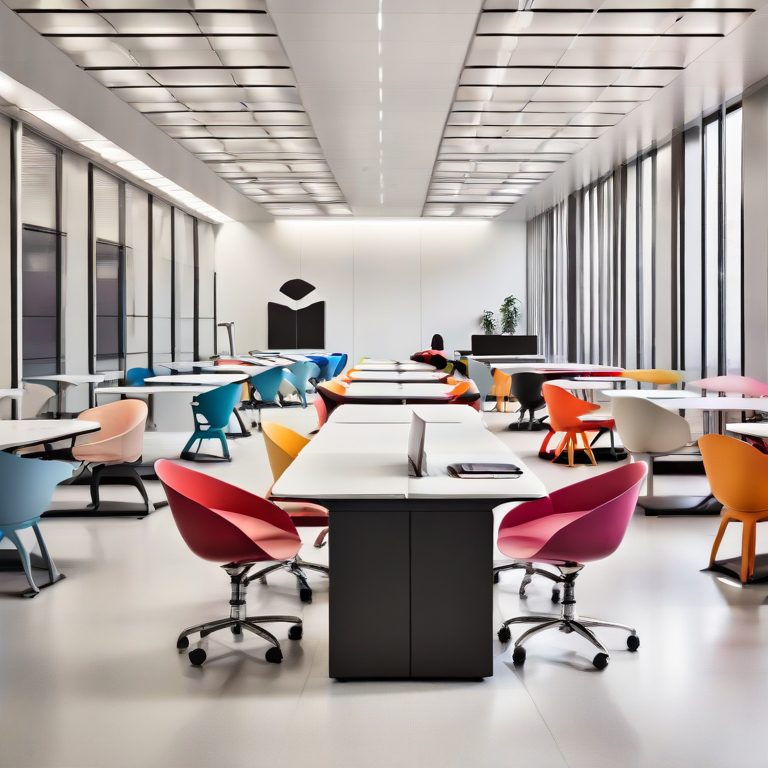Table of Contents
Key Highlights
- The blog is about the role and evolution of reception desks in hotels, explicitly focusing on the United States.
- It sheds light on the transition from traditional to modern reception areas.
- The impact of technology on the design and functionality of the desks is discussed.
- Different types of reception desks are explored, including single, multiple, and customized options.
- Key considerations for designing a functional and aesthetically pleasing reception area are provided.
Introduction
In the hospitality industry, the front desk is usually where guests first arrive. This area does more than just look nice. It serves as a center for many activities and is key to improving the guest experience. The front desk helps with easy check-ins and check-outs, making a huge impact. It also offers local information and works hard to ensure guest satisfaction. Because of all this, the front desk is very important for a hotel’s success.
The Role of Reception Desks in Enhancing Guest Experience
A good reception desk that works well is very important for a positive guest experience. It serves as a main place for guests to get help, information, and personal service. The look and function of this area can leave a strong impression and set the mood for their whole stay.
A friendly and well-equipped reception desk makes the hotel more appealing and encourages guests to return.
Creating the First Impression
The hotel lobby is where guests first arrive. It has a reception desk that makes a strong and positive impression. A well-designed reception area can make guests feel welcome and comfortable.
A big, open space, nice furniture, and good lighting help create a positive first impression. A clean and tidy reception desk shows that the hotel pays attention to details. Friendly staff are there to greet guests, help with their luggage, and make check-in easy. This all adds up to guest satisfaction.
Facilitating Smooth Check-Ins and Check-Outs
The reception desk is very important after the first welcome. It helps guests check in and out smoothly. Good front desk operations are needed to keep wait times short and avoid problems for guests.
This means having a simple system to handle guest information, assign rooms, and process payments. Also, using technology, including smartphone apps, to automate some administrative tasks can make these processes much better. If check-in and check-out are managed well, guests will have a great experience. They can easily settle into their rooms or leave without any delays.
The Evolution of Hotel Reception Desks in the United States
Hotel reception desks in the United States have changed a lot over the years. These changes show how guest needs, technology, and design styles have evolved. In the early 20th century, reception desks were often big and impressive. They were meant to represent the importance of the hotel.
This change in reception desks reflects the growth and development of the hospitality industry.
From Tradition to Modernity
In the early 20th century, front desks in hotels were very fancy. They often had dark wood, marble tops, and detailed designs. These desks were the main spot for hotel work, with staff handling everything by hand.
As hotels started using technology, the look and use of reception desks changed. They now include modern features that make things easier and focus more on guests. Current trends show that open-plan reception areas with modular desks are popular. This helps create a friendlier and less formal vibe.
Impact of Technology on Design and Functionality
Technology has greatly changed how hotel reception desks are designed and how they work. The use of computers, property management systems, and mobile devices has transformed hotel operations. As guests want smoother and smarter experiences, hotels have updated their reception areas to meet these needs.
Now, self-service check-in kiosks, mobile key cards, and online check-in options are common. These tools give guests more control over when they arrive and leave. Because of this move towards digital solutions, reception desks are now less cluttered and work more efficiently.
Different Types of Reception Desks Found in Hotels
Hotels today have different reception desks that fit various needs and styles. The style you choose usually depends on the size of the hotel, the layout, the brand image, and who the hotel wants to attract.
It’s important to know about the different styles and which ones work best for different types of hotels. This helps in making a reception area that is both useful and welcoming.
Single vs. Multiple Reception Desk Configurations
The decision to have a single or multiple reception desk configuration depends on factors like the size of the hotel, anticipated guest volume, and the hotel’s layout. Large hotels with high traffic often opt for multiple reception desks to manage guest flow effectively and reduce wait times.
In contrast, smaller hotels or boutique hotels may find a single hotel front desk sufficient for their needs. Ultimately, the goal is to create a balance between efficiency, convenience, and a welcoming atmosphere for guests. Front office managers should carefully consider these aspects when deciding on a configuration. Individual needs are paramount.
|
Feature |
Single Reception Desk |
Multiple Reception Desks |
|
Suitability |
Smaller hotels with low to moderate guest volume |
Larger hotels with high guest traffic |
|
Space Requirements |
Less space required |
Requires more space to accommodate multiple desks |
|
Staff Requirements |
Fewer staff members needed |
May require a larger front desk team |
|
Guest Flow |
Can lead to longer wait times during peak hours |
Helps manage guest flow more efficiently |
Customized Solutions for Boutique Hotels
Boutique hotels stand out because of their unique character and personalized service. They often choose special reception desks that match their style. These desks help make a great first impression on guests.
Designers team up with the hotel to build a reception desk that fits the lobby’s look. They focus on making it look good and work well, coordinating with housekeeping to ensure efficiency. By using creative materials and local designs, these customized desks help improve guest satisfaction. They provide a special and memorable experience for everyone who stays there.
Designing a Reception Area: Key Considerations
Designing a hotel reception area needs careful thought about how it looks and how it works. It is important to make a space that is attractive, friendly, and useful for guests and hotel staff.
This means paying attention to layout, lighting, furniture, and how technology fits into the space. This way, everyone can have a smooth and enjoyable experience.
Balancing Aesthetics and Functionality
A successful reception area combines nice design and practical use. The look of the reception desk and the area around it is important for making a great first impression. However, this should not make it hard to use.
The reception desk needs to be the right height and size for guests and hotel staff. There should be enough space for computers, phones, and other tools so staff can do their jobs well. Also, the way the furniture is set up in the lobby should help with easy movement of people.
Importance of Ergonomics for Staff
When creating a reception desk, it’s important to focus on comfort for front desk staff. They spend a lot of time at their desks. If the chairs are uncomfortable, the lighting is dim, or computer screens are not positioned well, it can cause discomfort. This can lead to tiredness and even health problems over time.
Using chairs that adjust and have good lower back support is helpful. Good lighting for tasks and ergonomic tools like keyboard trays and monitor stands can make a big difference. By choosing ergonomic options, hotels show they care about their staff and also improve their work productivity.
Conclusion
In conclusion, the reception desk is very important for how guests feel at hotels. It creates the first impression and helps with easy check-ins and check-outs. Hotel reception desks have changed a lot over time. They now use modern technology to improve their style and use. There are different types of reception desks for different hotel setups, whether it is one desk or many. When designing a reception area, it is important to think about looks and function while keeping the staff’s comfort in mind. Knowing what affects the number of reception desks helps hotels decide where to place them and how to design them. A well-designed reception area is key to guest satisfaction and improves the hotel experience.
Frequently Asked Questions
What factors influence the number of reception desks in a hotel?
The number of reception desks depends on a few things. These include the size of the hotel, how many guests there are, and how the lobby is designed. Booking rates and expected occupancy levels are important too. The time of day matters as well. During busy check-in and check-out times, more staff and desks might be needed.
How do hotels decide on the placement and design of their reception desks?
Hotels think about how they are laid out to help guests move around easily. They focus on making a warm and welcoming atmosphere, bringing in lots of natural light, and allowing easy access for guests and workers. The look of the hotel is very important. Trends in design guide choices on materials, shapes, and overall style. Also, making work easier for staff and boosting efficiency are very important when making choices.


